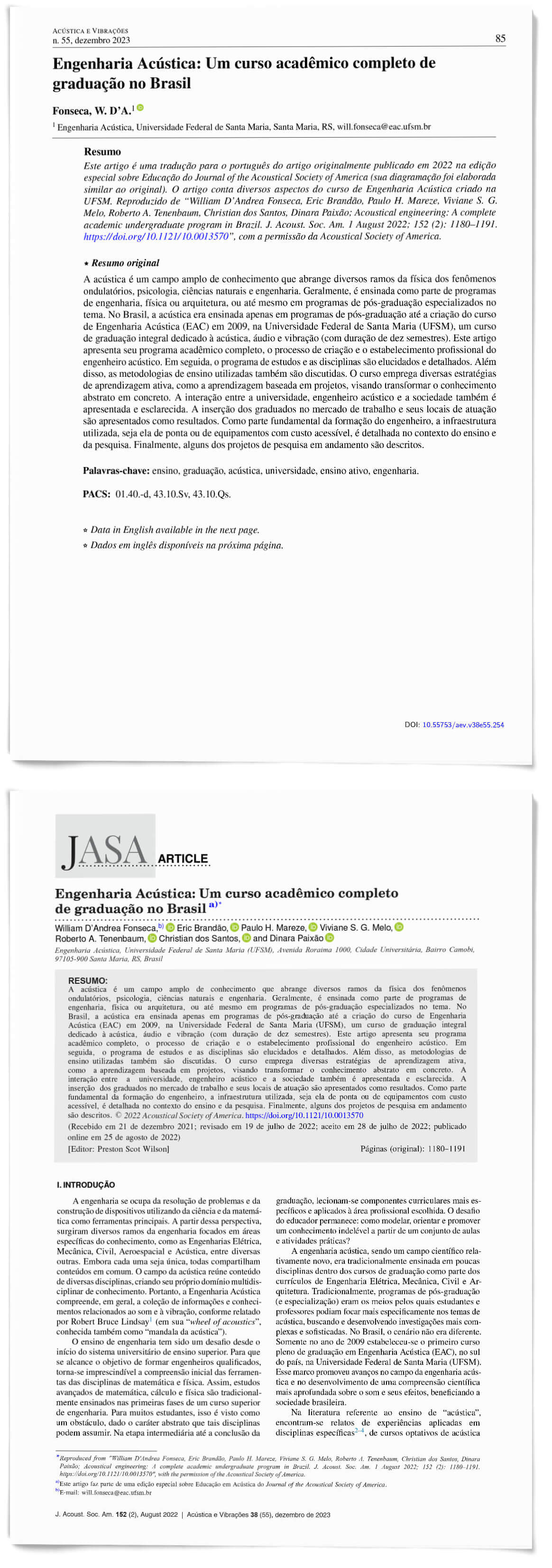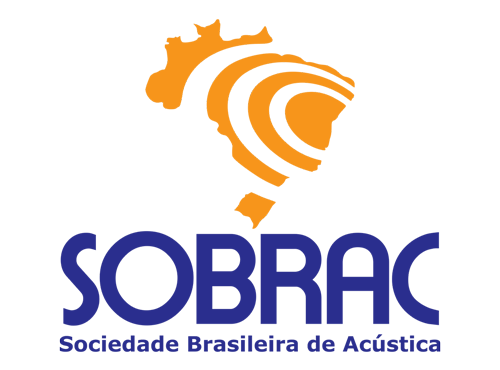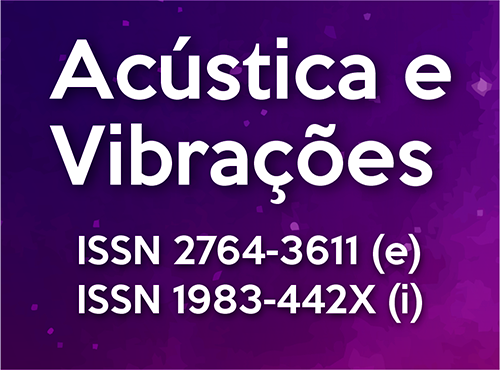Engenharia Acústica: Um curso acadêmico completo de graduação no Brasil
DOI:
https://doi.org/10.55753/aev.v38e55.254Palavras-chave:
ensino, graduação, acústica, universidade, ensino ativo, engenhariaResumo
Este artigo é uma tradução para o português do artigo originalmente publicado em 2022 na edição especial sobre Educação do Journal of the Acoustical Society of America (sua diagramação foi elaborada similar ao original). O artigo conta diversos aspectos do curso de Engenharia Acústica criado na UFSM. Reproduzido de "William D'Andrea Fonseca, Eric Brandão, Paulo H. Mareze, Viviane S. G. Melo, Roberto A. Tenenbaum, Christian dos Santos, Dinara Paixão; Acoustical engineering: A complete academic undergraduate program in Brazil. J. Acoust. Soc. Am. 1 August 2022; 152 (2): 1180–1191. https://doi.org/10.1121/10.0013570", com a permissão da Acoustical Society of America.
Resumo original:
A acústica é um campo amplo de conhecimento que abrange diversos ramos da física dos fenômenos ondulatórios, psicologia, ciências naturais e engenharia. Geralmente, é ensinada como parte de programas de engenharia, física ou arquitetura, ou até mesmo em programas de pós-graduação especializados no tema. No Brasil, a acústica era ensinada apenas em programas de pós-graduação até a criação do curso de Engenharia Acústica (EAC) em 2009, na Universidade Federal de Santa Maria (UFSM), um curso de graduação integral dedicado à acústica, áudio e vibração (com duração de dez semestres). Este artigo apresenta seu programa acadêmico completo, o processo de criação e o estabelecimento profissional do engenheiro acústico. Em seguida, o programa de estudos e as disciplinas são elucidados e detalhados. Além disso, as metodologias de ensino utilizadas também são discutidas. O curso emprega diversas estratégias de aprendizagem ativa, como a aprendizagem baseada em projetos, visando transformar o conhecimento abstrato em concreto. A interação entre a universidade, engenheiro acústico e a sociedade também é apresentada e esclarecida. A inserção dos graduados no mercado de trabalho e seus locais de atuação são apresentados como resultados. Como parte fundamental da formação do engenheiro, a infraestrutura utilizada, seja ela de ponta ou de equipamentos com custo acessível, é detalhada no contexto do ensino e da pesquisa. Finalmente, alguns dos projetos de pesquisa em andamento são descritos.

Publicado
Como Citar
Edição
Seção
Licença
Copyright (c) 2023 Acústica e Vibrações

Este trabalho está licenciado sob uma licença Creative Commons Attribution-NonCommercial-ShareAlike 4.0 International License.




